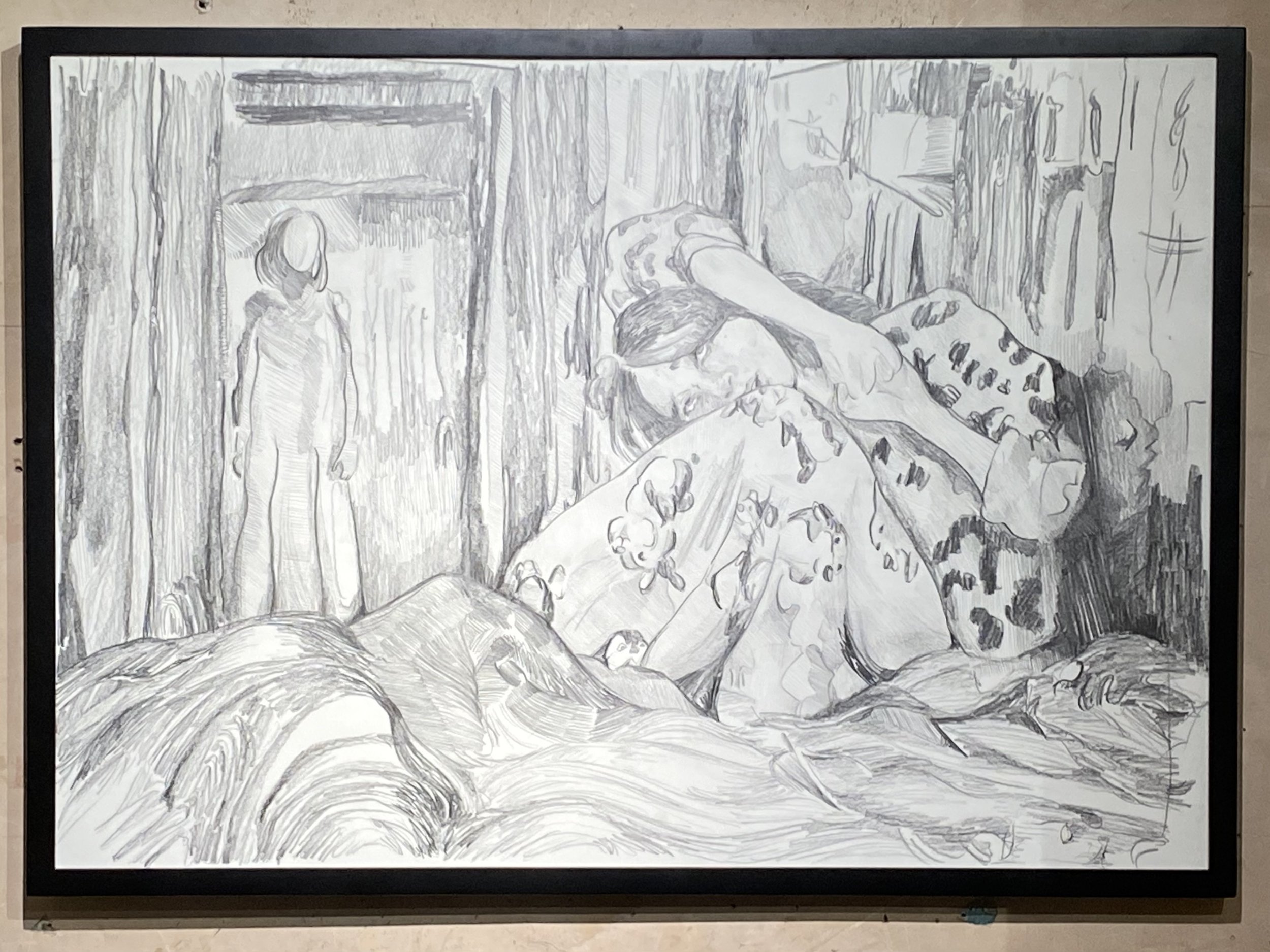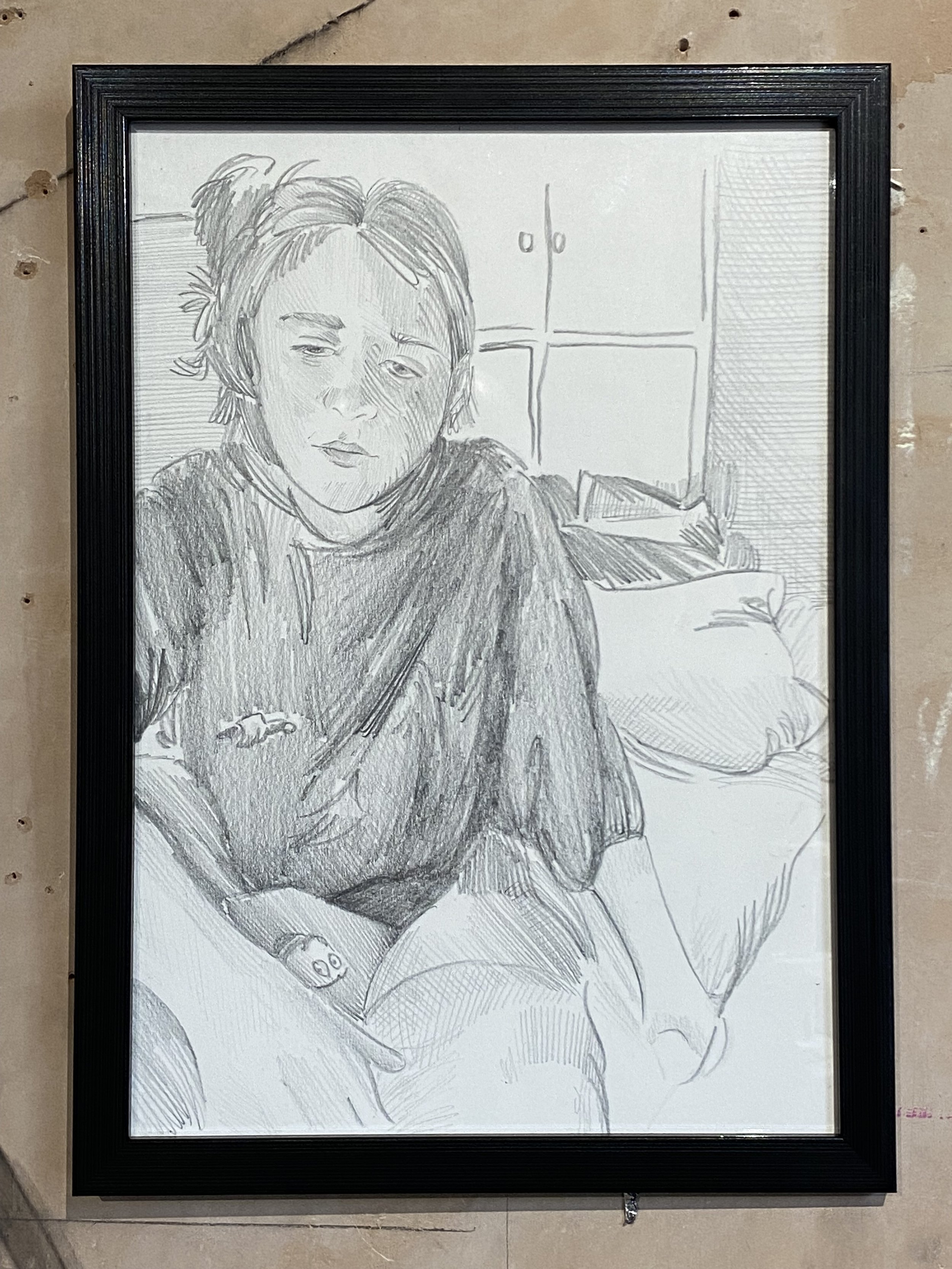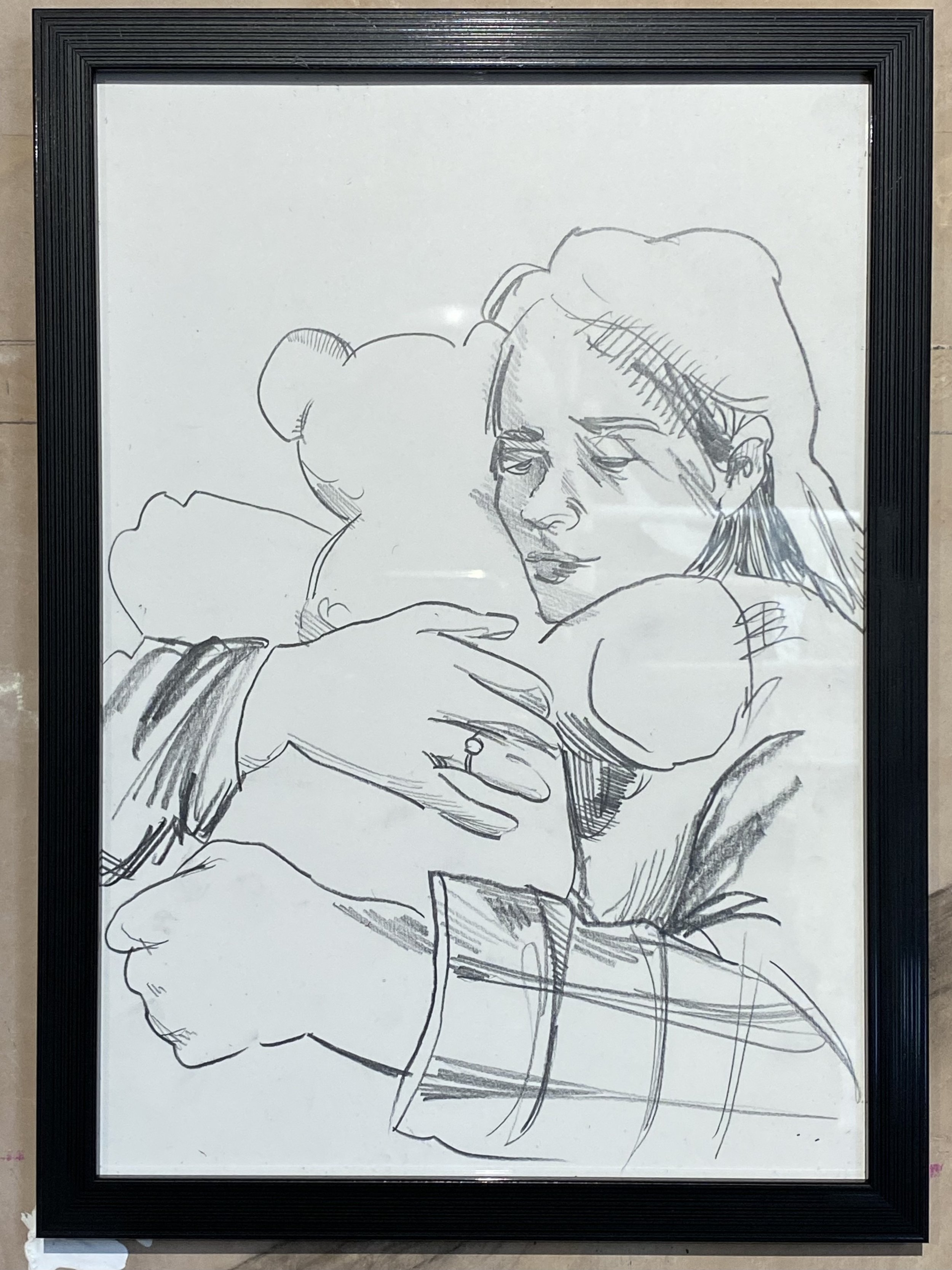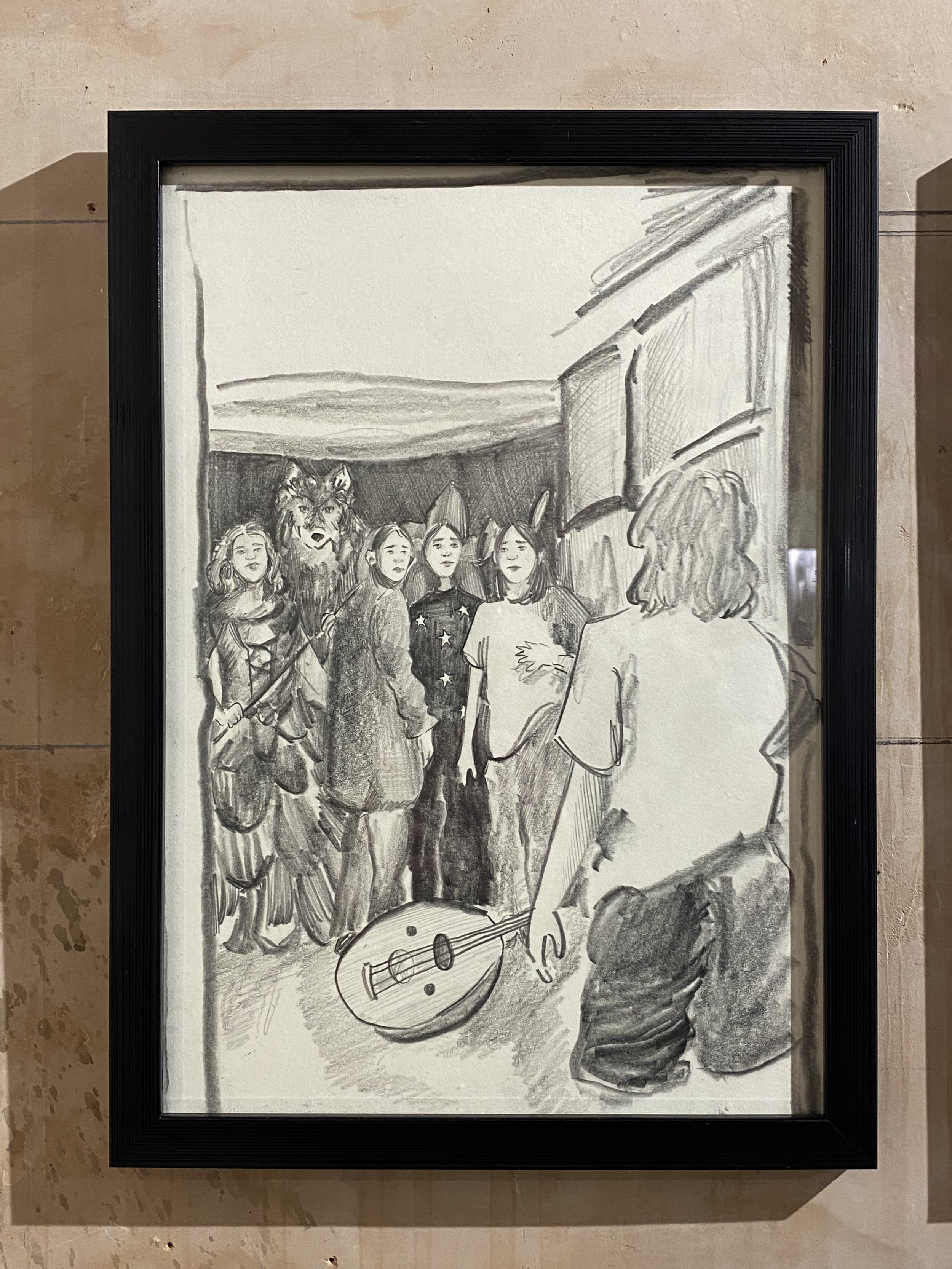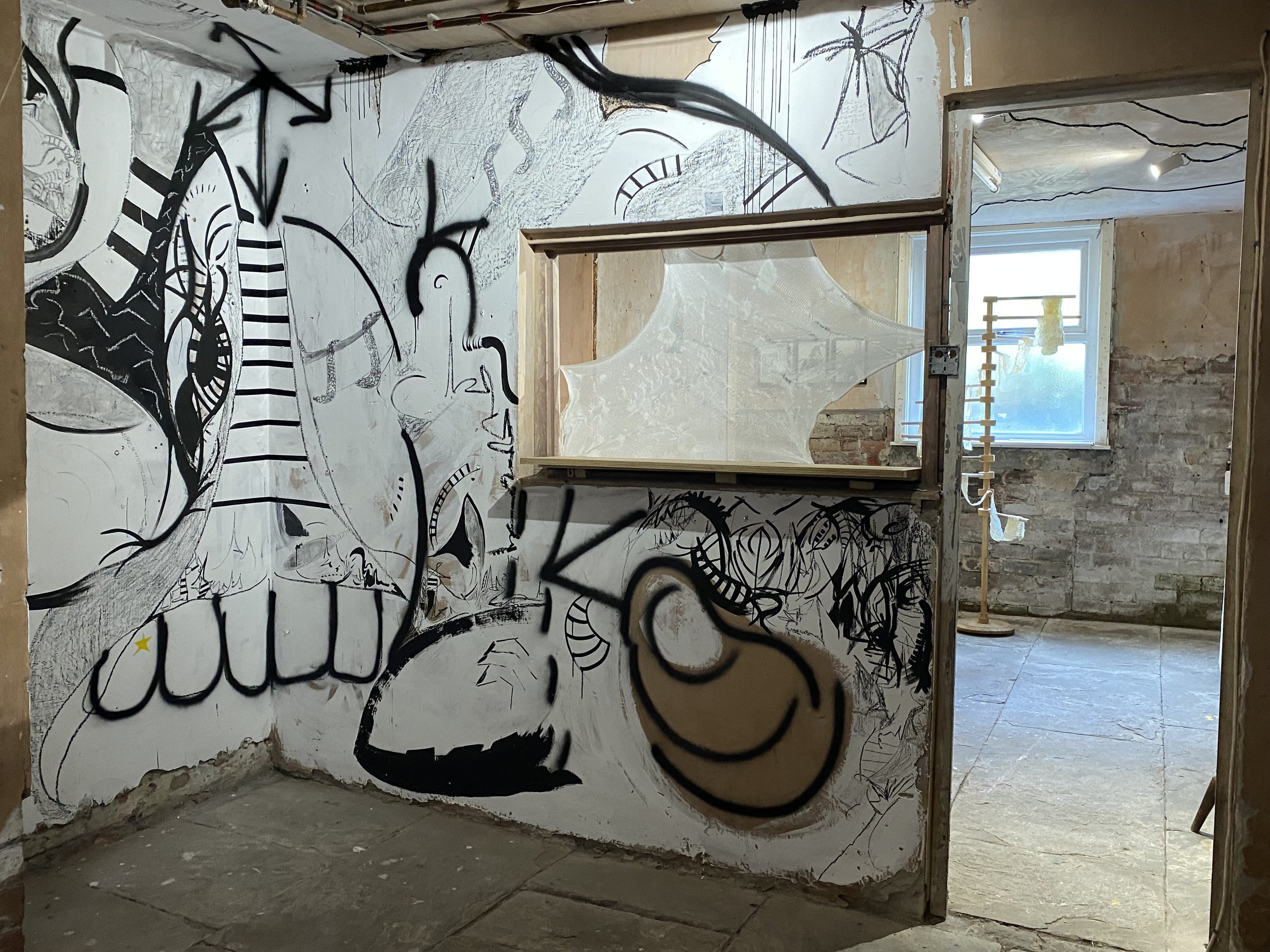Ars Longa Vita Brevis
Introduction by Bruce Davies. Further Text by Ruby Waterhouse
‘Art is Long, Life is Short’
Hippocrates
One of the absolute joys of running an independent art space is the flexibility to be reactive.
Many of our projects are scheduled in advance in the same manner that all professional spaces operate, but with room to improvise. Because of this we already know that we will have a programme in 2024 and 2025; it is vital to think ahead. What is it they say ‘Fail to prepare, prepare to fail’. Twelve years into programming projects, exhibitions, events, workshops and such like, I can only think that I am getting something right in terms of preparing for the future.
Art is indeed long, and life most definitely brief, considering the phrase ‘Ars Longa Vita Brevis’ originates in the 5th Century BCE with Hippocrates. In the twentieth century writer Joseph Conrad adds to this thought ‘and success is very far off’, adding ballast to the idea that artistry can be longer lasting than the lifetime of an artist.
‘Beware of Artists, they mix with all classes of society’
A popular meme from the internet of today allegedly has its origins in a warning from King Leopold of Belgium to Queen Victoria, when in 1845 he wrote
‘dealings with artists, for instance, require great prudence; they are acquainted with all classes of society, and for that reason dangerous; they are hardly ever satisfied, and when you have too much to do with them, you are sure to have des ennuis’
This, like the Hippocrates phrase, was picked up again in the twentieth century by the McCarthy era communist witch hunts, in which many artists were investigated by the House of un-American Activities.
Rigidity of thought though is one of the problems of human systems. We hear much talk in modern politics of the U-Turn and flip-flopping as though this is an inherently bad thing. But, like the word radical, any positive aspects of changing one's mind are more often than not subsumed by the negative connotations. Whilst the system terrorises us with ideas of radical politics, radical religion and all other groups that do not occupy the centre ground, they neglect to acknowledge ideas such as that, if Jesus lived now he would be considered a radical.
Artists too can be radical, they are the people with ideas, the innovators, the people who prepare the way for the future. It is not a coincidence that the artworld and the military both use the phrase Avant-Garde; the advance guard are the people that go in first, ahead of everyone else, and clear the way for everybody else to follow.
Radical behaviour is not always a thing to be feared. Whilst there are those out there who seem determined to destroy the future for their own short-term gain, there are those of us out there who are tending the light at the end of the tunnel, hoping and behaving with radical intentions to make the world a better place than it is right now.
“Still so dark all over Europe
And the rainbow rises here”
Black Planet: Sisters of Mercy
This returns me to my original point about being independent and retaining the possibilities of being reactive without being reactionary. Things change, be prepared, but equally be prepared to change. The future has not been written yet, so don’t look back, you're not going that way.
Born in Headingley, Leeds in 2000, Ruby Jean Waterhouse (@rubyjeanart) is a multimedia artist, who uses video, performance, photography, drawing, installation, textiles, sculpture and sound. Studying Art at A-Level Waterhouse painted both figuratively and abstractly. In 2019, however, she joined the Art Foundation course at Leeds Arts University where she experimented with performance and video work surrounding the idea of the body’s interaction with materials – trying to push the boundaries of drawing through non-traditional ways of working. Waterhouse started studying BFA Fine Art at the Slade School of Fine Art in 2020 where she originally wanted to explore performance further. Because of limited access to the studio due to Covid-19, she was drawn more to video rather than performance. Using materials such as a 10 metre roll of elastic, she interacted, creating shapes and changing the form of the materials and her body. Filming these interactions, and editing the videos to emphasise the shapes made, the idea of “video-drawing” was born.
At the end of her first term, Waterhouse was encouraged to return home to Leeds to study since the Covid-19 virus was still spreading. Taking regular walks in the Yorkshire landscape, she became increasingly interested in streams, rivers and the rain. Becoming excited by the water, Waterhouse decided this would be her next material to interact with. She continued to make “video-drawings” using the water but also started bringing these 2D videos into a 3D space through projection. Fabric was introduced as a material to work with alongside the water: “me and the water dance together and the fabric is the water’s costume”.
Starting her second year in September 2021, Waterhouse became attracted to the making of more tangible work since she now had full access to the studios. Using fabric, print and embellishments to replicate the fabric and water she created a layered installation piece using projection and fabric. Waterhouse was part of the FISHTANK exhibition in January 2022 with some fellow classmates. This exhibition enabled her to become more involved with installation in her practice: exploring fabric and lighting further. Waterhouse is now playing with the concept of collaboration between her and water and exploring their relationship through sound, video, photography, performance and sculpture.
This project by Ruby essentially has its origins in one of the strangest experiences of the contemporary era -the pandemic lockdown of 2020- so I asked her to tell me about the work that she will be exhibiting and some of the concepts behind the work of other artists that she has chosen for this ad-hoc grouping.
“Wanting to create something visceral and tangible, exploring the tactility of materials was the root of this exhibition. I wanted to re-imagine the ‘art space’ and push it out of the boundaries of the white cube. This made BasementArtsProject the perfectly imperfect venue to show ‘Fray’.
Curating this show started with my own practice and how I recently started creating sculptural pieces using textiles and broken down matter. I first thought of Cleo Milly Nelson (@cleonelsonart) and Alice Marshall (@alicemarshallart). Both of their practices not only include textiles but also the creation of new pieces through the destruction of substances. Nelson with her dissolved yarn to create texture and to comment on lost histories and Marshall’s use of donated fabric which is cut, tied, draped, pinned, stretched, folded, frayed, rolled, scrunched and painted.
This enabled me to imagine the rebirth of new work through destroyed things. Our past selves are not dead but broken apart and put back together in a different formation. A more practical perhaps or maybe creative self. As artists that’s what we do. We take things apart, find things, buy things, plan things all to put it together in whatever way we want to create something only we could at that specific moment in time.
‘Fray’ holds this specific moment in time for the viewer to experience the artist’s process and textural tactile artwork.
Cat Young (AKA @nocanvascat) brings a time-based mural to the walls of BasementArtsProject. Responding to the space and textures of the walls, Young created a drawing, P.8:23-27, that would only appear through the project of ‘Fray’. Sculpturally responding to the space, Marshall also created two site specific pieces,Surround/Stretch (2023) and Stretch/Surround (2023), playing with negative space. Nelson’s water-soluble yarn piece, Brigantia Knit (2022), stretches across the architectural aperture feature giving a textural interface to each side of the exhibition when looked through accordingly. During installation, Nelson and I experimented with the placement of her ink on paper piece, Unravel (2023). Treating the paper as an independent object rather than a vessel to show the writing, we created an interesting composition.
The notion of the site-specific is strong at BasementArtsProject, with the unique features of the venue pulling artists to respond to it. Marks are not only made but also left behind from each project, making the walls and ceiling its own work of art.
The brick walls of the space hold a stylistic element to some works. Inspired by mermaids and sailors’ tattoos, Scarlett Pochet (@scarlettrosep_) uses latex and hardware to create her wall piece, Studies for a Mermaid’s Tail (2023). This sits firmly on the brick, giving the latex a skin-like physicality. The hard of the brick complements Louie Hollander’s (@l.hollander_fashiondesign) softness of fabric choices and construction in The Beauty of Sadness, A Fashion Collection A/W (2023) where he experiments with a multitude of materials and techniques.
A juxtaposition of hard/soft is also used in the presentation and execution of my own piece Calcify // Rebirth (2023): soft beaded fabric against a hard brick wall and the beauty of pearl and glass beads on an unsettling adaptation of a wooden cabinet.
The texture of wood items work well in the basement but wood as a material suits the concept of ‘Fray’ harmoniously. The growth of trees hold histories we will never know about, that get chopped and reformed to sit quietly as a new practical use, away from their original purpose while keeping their integrity of trustworthy strength. Ellie Harrison’s (@elliehar.t) use of wood to create a structure to hold her latex spaghetti sheets in Spaghetti Spine (2023) forms a bodily and tactile piece. It takes place next to the window to really illuminate the surface.
Laying on the back of BasementArtsProject’s own wooden chair, Conchobhar Bowyn (@nomorespacehelmetsforthecow) uses wool and repurposed materials to create the sock puppet Jenny Pingles (not Penny Jingles) (2023). Putting a piece of the domestic life in the exhibition space brings life to Bowyn’s cheeky characterised piece.
Pulling inspiration from different moments in her life, Martha Burgin (@stoplookingatmyshirt) presents graphite drawings playing with the push and pull between nostalgia and change through time, successfully embracing the breakdown of these memories to create new, thought-provoking drawings: My Pal with the Long Hair (2023), Breaking the News (2023), In the Darkness (2023), Being Carried to Bed (2023), The Reunion (2023), Parting (2023), At the Bridge (2023).
